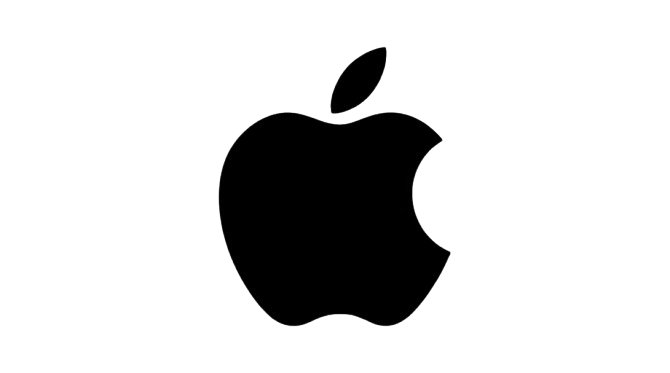Spot Exchange Rate: Definition, How It Works, and How to Trade
In a spot transaction, traders usually face costs like spreads, commissions, transaction fees, and sometimes exchange fees. CFD trading often includes spreads, commissions, and overnight financing charges for positions held beyond a single trading day. These costs can impact the overall effectiveness of long-term CFD trades.
Spot trading, on the other hand, typically requires full payment for the asset upfront, which means no leverage is used unless the trade is conducted on margin, which is less common. This usually occurs two business days later than the transaction or “trade” date. This means traders do not need enough currency to settle a spot FX transaction as soon as it is executed. IG accepts no responsibility for any use that may be made of these comments and for any consequences that result. In this way, forex dealers incur costs managing their risk while providing liquidity to their customers.
“Business days” exclude Saturdays, Sundays, and legal holidays in either currency of the traded pair. The “settlement” or “value” date is the date on which the funds are physically exchanged. There are different ways in which traders and investors can execute a spot forex exchange. The term “spot” in relation to an FX transaction means “on the spot.” Colloquially, the term means having to come up with something right away. They have the choice of either buying att the indicated ask price(“go long”) or selling at the indicated bid price (“go short”).
Buyers and sellers normally exchange cash for the noted security in the spot market, which is why they’re normally called cash or physical markets. As noted above, a spot trade is a financial transaction that involves a commodity, foreign currency, or financial instrument. These types of transactions can take place on an exchange or over the counter (OTC).
The euro is used in many continental how to withdraw money from stake: how to withdraw my funds stake help center European countries including Germany, France, and Italy. The retail forex market is dominated by travelers who wish to buy and sell foreign currency, whether it be through their bank or a currency exchange. Conversely, CFDs are derivative instruments that allow traders to speculate on price movements without owning the underlying asset.
We introduce people to the world of trading currencies, both fiat and crypto, through our non-drowsy educational content and tools. We’re also a community of traders that support each other on our daily trading journey. To avoid physical settlement, traders simply “roll over” transactions on the settlement date. Traders typically want to profit from exchange rate differences on their transactions, rather than acquiring large quantities of currency. Although spot FX trades always have a settlement date, most are not physically settled.
How Spot Markets Work
Sentiment analysis involves analyzing market sentiment and investor behavior to predict market movements. Spot exchange rates are different from real effective exchange rates (REERs). While the spot rate is the market rate at any given point in time, the REER indicates the value of a currency relative to its trading partners. As such, it is the weighted average of a country’s currency related to a basket of other currencies. In the short term, rates are often driven by news, speculation, and technical trading. In the long term, rates are generally driven by a combination of national economic fundamentals and interest rate differentials.
Analysis of XAU/USD: Gold Price Holds Near Key Resistance
The difference in the price of a future or forward contract versus a spot contract takes into account What’s leverage in forex the time value of the payment based on interest rates and the time to maturity. Although the two trades involved are spot trades, the swap price is calculated using interest rate differences in the same way as for a forward contract. The exchange rate on a spot FX transaction will typically be higher or lower than the mid price, depending on whether it is filled at the bid or ask price. The“exchange rate” for a currency pair usually refers to the “mid” price, which is the midpoint between bid and ask. The forex spot rate (or FX spot rate) is the amount it costs in one currency to buy another currency for immediate delivery. Traders can choose from a wide range of currency pairs to trade, including major pairs such as EUR/USD, GBP/USD, and USD/JPY, as well as minor and exotic pairs.
- They are also sometimes called spot trades since the expiring contract means that the buyer and seller will be exchanging cash for the underlying asset immediately.
- Forex trading is a way to speculate on international currencies without taking ownership of the physical assets.
- The price for any instrument that settles later than the spot is a combination of the spot price and the interest cost until the settlement date.
- Many commodities have active spot markets, where physical spot commodities are bought and sold in real-time for cash.
What is CFD trading?
The spot exchange rate is the price (set by the forex market) at which you can buy a currency today. The settlement date for your transaction will take place two business days later (for the majority of currencies). Many commodities have active spot markets, where physical spot commodities are bought and sold in real-time for cash. Foreign exchange also trades in the spot currency market where the underlying currencies are physically exchanged following the settlement date.
Global forex trading takes place electronically between large, multinational banks, corporations, mutual funds, hedge funds, insurance companies, and government entities. Transactions are made for a wide range of purposes, including import and export payments, short- and long-term investments, loans, and speculation. Spot forex trading is popular among day traders because spreads are generally lower than those available when trading FX forwards.
Unlike futures contracts, which specify a later delivery date, spot contracts are settled quickly within a specific timeframe. The market includes a wide variety of participants, ranging from individual retail traders to large institutional investors like banks and hedge funds. By keeping up with economic indicators, geopolitical events, and market sentiment, traders can make informed decisions and increase the probability of profitable trades. However, it is important to remember that forex trading carries inherent risks, and individuals should only trade with funds they can afford to lose. Technical analysis involves analyzing charts and market trends to identify patterns and predict future price movements. Fundamental analysis involves analyzing economic and political factors that affect currency values, such as interest rates, inflation, and geopolitical events.
Foreign exchange spot
As with any form of trading, risk management is crucial in spot forex trading. Traders should always have a clear understanding of their risk appetite and use appropriate risk management tools to protect their capital. Most interest rate products, such as bonds and options, trade for spot settlement on the next business day. Contracts are most commonly between two financial institutions, but they can also be between a company and a financial institution. An interest rate swap, in which the near leg is for the spot date, usually settles in one business day. This means you are buying one currency (base currency) while selling another (quote currency) because you believe one of the currencies will strengthen against the other.
Exchanges bring together dealers and traders who buy and sell commodities, securities, futures, options, and other financial instruments. Based on all the orders provided by participants, the exchange provides the current price and volume available to traders with access to the exchange. This is why they are also referred to as physical markets or cash markets because trades are immediate. Both the buyer and seller agree to the immediate transfer of funds even though transactions settle on best robinhood stocks to buy or watch now 2020 different schedules. For instance, a stock transaction settles on a T+1 basis or the business day after the transaction date. A spot contract is an agreement to buy or sell an asset at the current market price with immediate delivery.
On the transaction date, the two parties involved in the transaction agree on the amount of currency A that will be exchanged for currency B. Finally, the parties also agree on the value of the transaction in both currencies and the settlement date. If the currencies are to be delivered, the parties also exchange bank information.
Unlike a spot contract, a forward contract, or futures contract, involves an agreement of contract terms on the current date with the delivery and payment at a specified future date. Contrary to a spot rate, a forward rate is used to quote a financial transaction that takes place on a future date and is the settlement price of a forward contract. However, depending on the security being traded, the forward rate can be calculated using the spot rate. Should a counterparty wish to delay delivery, they will have to take out a forward contract. For example, if a EUR/USD trade is executed at 1.1550, this will be the rate at which the currencies are exchanged on the spot date. However, if European interest rates are lower than they are in the U.S., this rate will be adjusted higher to account for this difference.


























































































